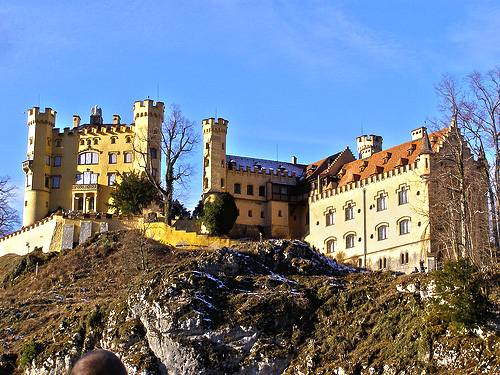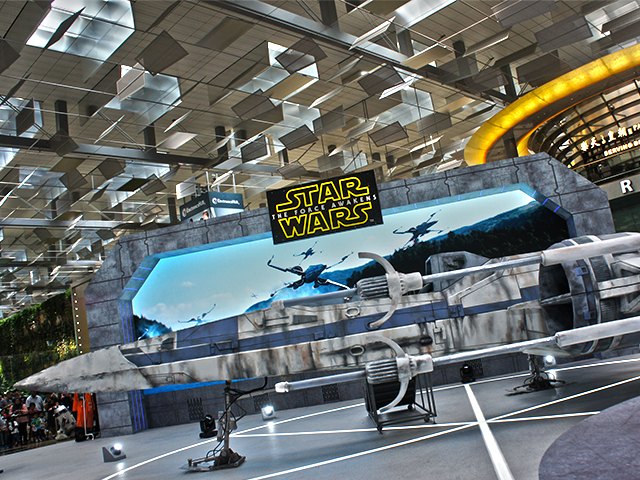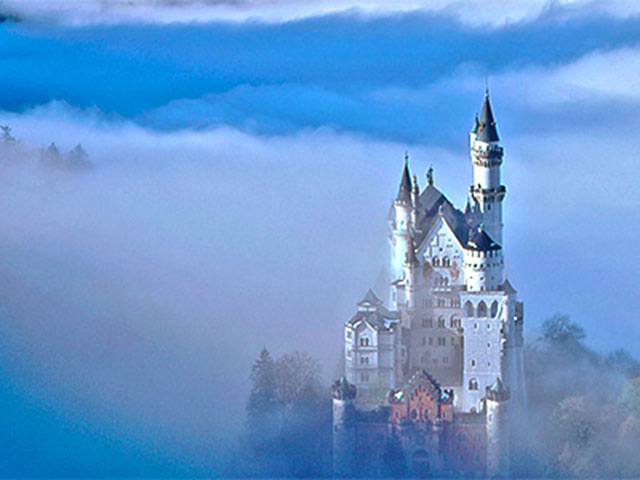
At the end of the Romantic Road- Fussen
The Romantic Road- a winding path of picturesque sights, enchanting towns and charming castles that ends off with a flourish at the Bavarian town of Fussen, set against the glorious backdrop of the Alps. Fussen is known for its castles, beautiful lakes and the ancient former abbey of St. Mang. Most importantly, the town is right next to the castle where fairy tales are spun from- the Neuschwanstein Castle. You only need to spend around two to three days in Fussen to soak in its wealth of sights.
Neuschwanstein Castle
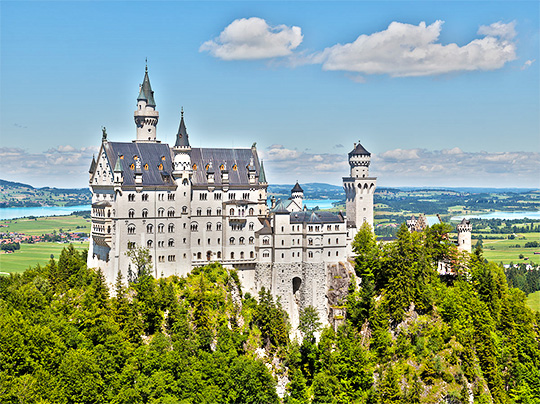
Most visitors to Fussen have only one goal in mind- to visit the real Disney castle. Peeking through the mountains like the mystical castle in The Neverending story, The Schloss Neuschwanstein is designed by Bavarian King Ludwig himself. With assistance from a stage designer in place of an architect, the collaboration resulted in a fairy-tale like castle that fleshed out the mad king’s whimsical state of mind.
Ludwig was fascinated with medieval knights and the romanticism of the Middle Ages, resulting in the idea of building a romantic medieval castle against a dreamy mountain setting. Started in 1869, his grand plan was to use his masterpiece castle as a stage to bring to life the world of Germanic mythology recreated in operatic form by composer, theatre director Richard Wagner. The most lavish part of the castle is the Sängersaal or the Minstrels’ Hall, where wall frescos play out scenes from the opera Tannhäuser. Concerts are held in the hall every September.
The castle was sadly never finished and Lugwig himself, despite his ambitions for his castle, only spent 160 days here. Some completed parts of the castle include his themed bedroom, drowned by an enormous Gothic-styled bed capped with elaborate spire carvings, an artificial grotto, mosaic flooring with over two million stones and more.
Tip: when visiting the castle, don’t forget to glance out the windows. Almost every window in the huge castle lends view to haltingly beautiful sights.
At the end of your castle tour, you can watch a 20-minute film on the castle to peek into Ludwig’s quirky mind.
Tip: Always make advanced reservations, the peak season is from June to August, so take note when visiting. Tourists here during the peak season without reservations can easily wait up to a few hours.
When visiting Neuschwanstein, make time to walk the suspension footbridge behind it. Here you can take in the stunning view of Neuschwanstein, with the neigboring Schloss Hohenschwangau in the background.
Hohenschwangau Castle
There’s another popular castle in Fussen, rebuilt from12th century ruins of Schwangau knights by Ludwig’s father, King Maximillian II, into the neo-Gothic styled Schloss Hohenschwangau. Definitely more understated than Neuschwanstein, Hohenschwangau is a more homely castle splashed with a romantic touch from the Gothic era. Set designer Domenik Quaglio painted the walls with legends from German history, especially of the Swan Knight, Lohengrin. A visit here gives visitors a better understanding of Ludwig’s fanciful castle idea- he was raised here, amongst a sea of medieval imagery.
A visit to the Hohenschwangau castle can be on its own or combined with the Neuschwanstein. It’s open all year round from 9am to 6pm from April to September and 10am to 4pm from October to March, except for Christmas.
St Mang’s Abbey
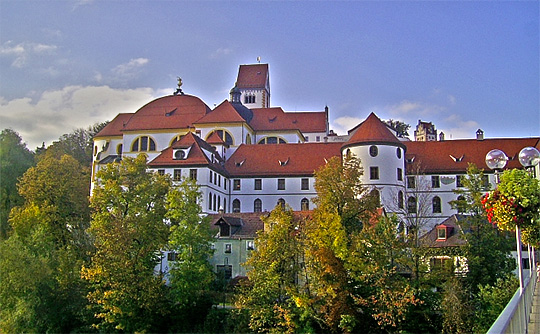
This century old church is a former Benedictine monastery. A visit here is a throwback to early 9th century when it was built. Still beautifully maintained, the architecture withstood the test of time and still awes with its sturdy craftsmanship. The wall murals, gilded artwork and detailed statues are marvellous works of art and beautifully preserved. The church is known for its choir and Sunday masses. Visitors are welcome to join in on Sundays.
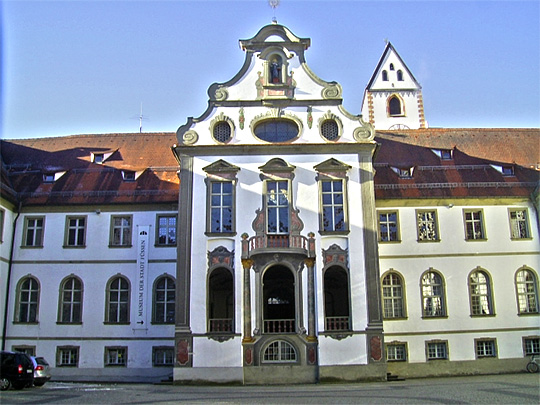
Tip: After visiting the abbey, so walk around it to the park and river for a relaxing scenic view of the quaint Fussen town.
Fussen’s shimmering lakes
Fussen is known for its lakes, which offer soothing sights and allow for activities.
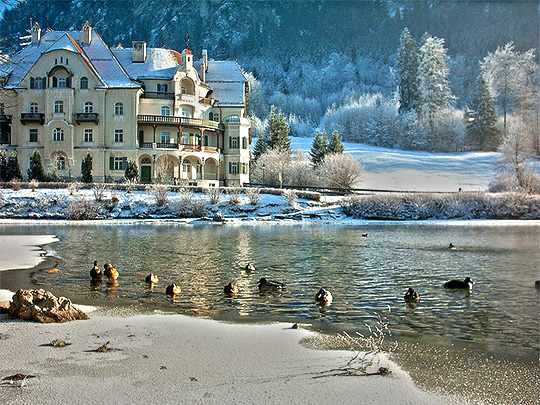
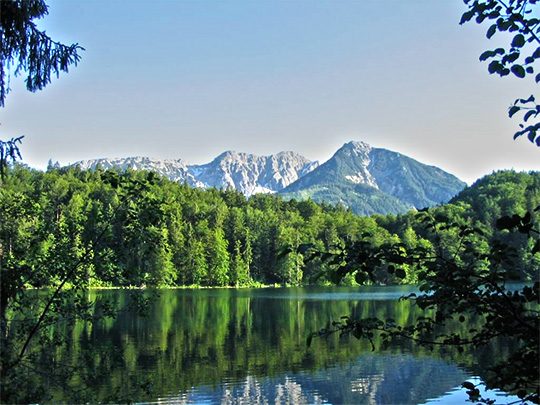
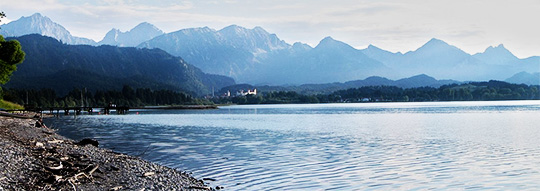
Getting to Fussen
It’s easy to get to Fussen. You can get there from Munich via many connections, with direct trains departing every two hours. The cheapest tickets costs 22€ on a round trip. For an even more economical way to get to Fussen, take the bus tours from the Munich train station. Most bus operators will eve throw in a visit to Neuschwanstein.
